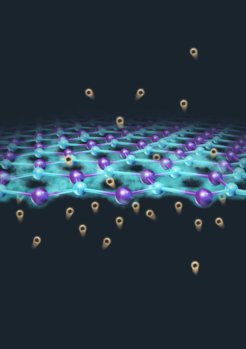An artificial neuron based on graphene and water

Memristive devices, electrical elements whose resistance depends on the history of applied electrical signals, are leading candidates for future data storage and neuromorphic computing. Memristive devices typically rely on solid-state technology, while aqueous memristive devices are crucial for biology-related applications such as next-generation brain-machine interfaces. Recently, nanofluidic devices have been reported in which solvated ion transport exhibits memristive behavior. The challenge associated with these approaches is the complexity of the device fabrication. Realizing memristive behavior in a simple system is highly desirable.
We present a relatively simple aqueous proton-based memristive device based on a calcium fluoride (CaF2)-supported monolayer graphene in contact with bulk water. The device design is enabled by molecular-level insights into the memristive ion/water dynamics and the corresponding synaptic phenomena in this aqueous memristive device. The memristive behavior arises from the fast proton transfer across the graphene and the relatively slow diffusion process of protons. Despite the device's simplicity, this aqueous device exhibits long-term and tunable memory (from 60 seconds to 6000 seconds) and promising potential for large-scale integration and multiplication.
Our work demonstrates a new and simple concept for developing aqueous electrolyte-based neuromorphic iontronics using two-dimensional (2D) materials through manipulating interfacial acid-base equilibrium.












